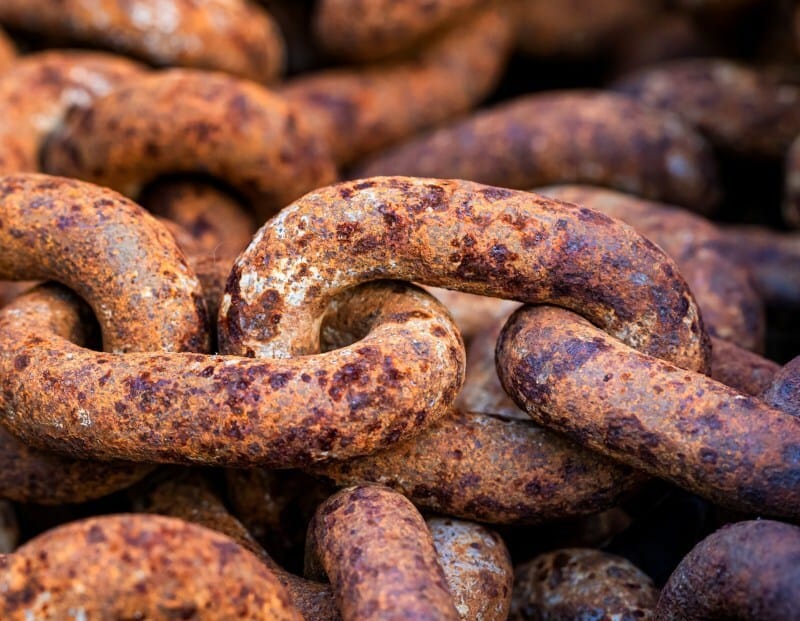Shiny is pretty, but it sometimes lacks character.
Rust is decay, but it is also transformation. Iron and oxygen meet, and time itself paints their surfaces in copper, orange, and dark browns.
What begins as corrosion becomes a truly remarkable palette that rivals autumn leaves or desert canyons. We’re quite enamored with it.

Photo by Marie Proročenko on Unsplash
Look closely at rusted metal and you see maps and textures the human hand could never draw.
Swirls, fractures, and constellations spread across a surface like abstract art. Every patch of rust tells a quiet story of weather, water, and air at work.
Old rusty cars have a certain wisdom and charm to them, and we like to think of them as having a lived a full, happy life.

Photo by Nikolai Justesen on Unsplash
Designers and artists have long embraced rust for its honesty. It carries the mark of age, of impermanence, of life passing through its material.
Corten steel (weathering steel) is specifically designed to rust, and create a timeless look and feel.

Photo by Олег Мороз on Unsplash
Sculptures left outdoors gather rust the way trees gather bark. Architecture that lets steel weather naturally blends into landscapes with warmth and character.

Photo by Jason Leung on Unsplash
Rust is often dismissed as damage, something to sand away or scrub clean. Yet it has its own beauty and character, marked by time-worn decay.

Photo by Zdeněk Macháček on Unsplash

Photo by Denise Bossarte on Unsplash
We like to think of rust not as ruination but as art, or at least another phase of time.
The post The Beauty of Rust appeared first on Moss and Fog.
